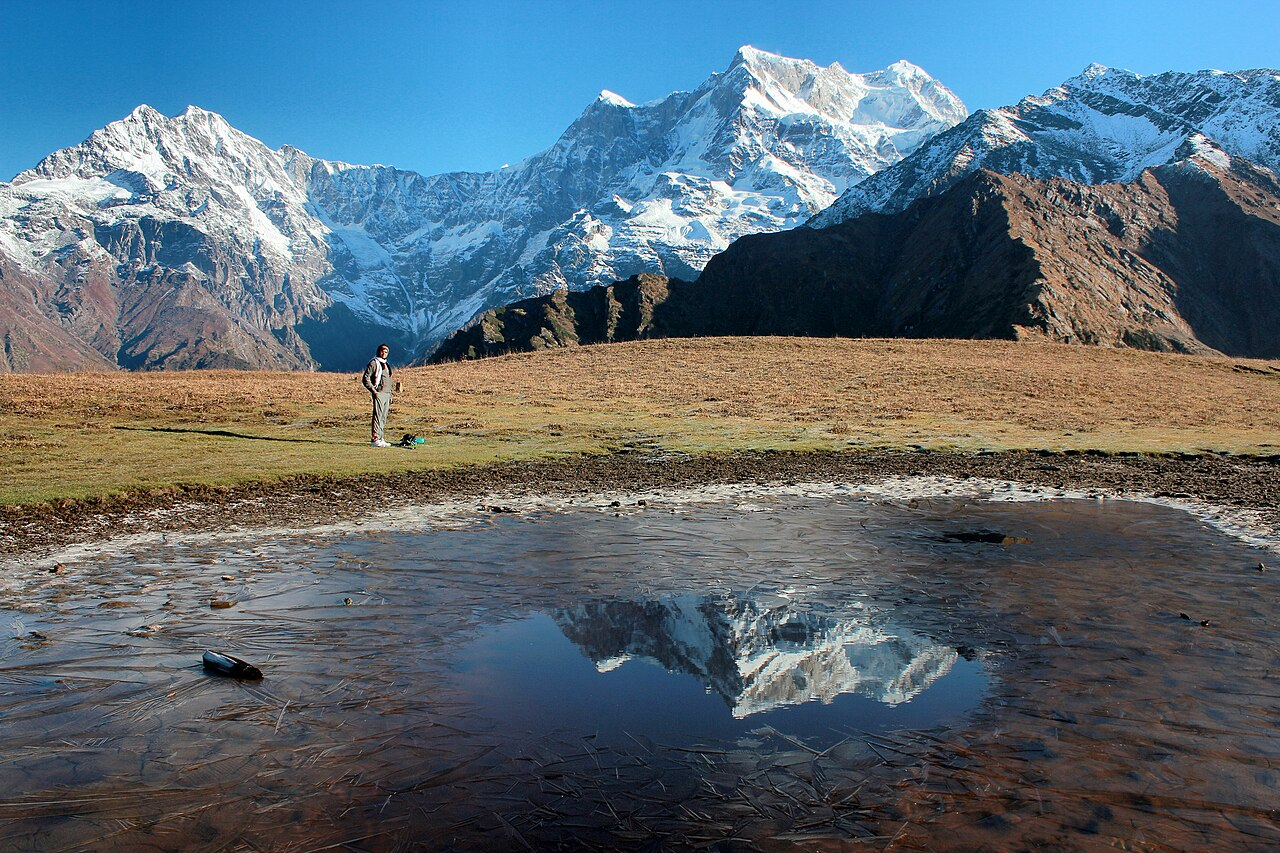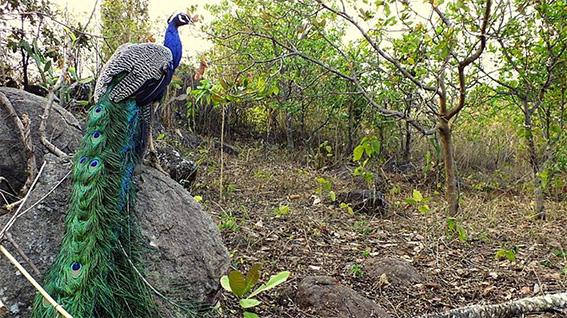Bihar Switch to Hindi
Bihar's Progress in Basic Indicators
Why in News?
Recently, NITI Aayog's CEO highlighted Bihar's achievements in key development areas such as education, health and governance.
Key Points
- Performance in Education and Health: Bihar is making notable progress in basic indicators like education and health, expected to catch up with national standards in a few years.
- Aspirational Blocks: Improved governance and service delivery are transforming aspirational blocks into inspirational ones.
- AI in Governance: Bihar is the first Indian state to implement an AI-driven decision support system for policymakers and mid-career officers.
- BIPARD's Role: The Bihar Institute of Public Administration and Rural Development (BIPARD) introduces three advanced labs focused on data-driven governance, simulation-based training, and collaborative policy formulation.
- Introduction of New Labs at BIPARD:
- GenNext Lab: This lab will leverage secure artificial intelligence to train administrators in data-driven decision-making, predictive analysis, and governance optimization.
- Niti Shala Lab: An immersive learning environment using advanced simulation technologies. Trainees will engage with real-world scenarios to enhance their governance skills.
- Viksit Chintan Kaksh: A collaborative space for state officers to strategize and deliberate on pivotal policy decisions. Equipped with communication and data-sharing tools to drive policy consensus and governance reforms.
- Introduction of New Labs at BIPARD:
NITI Aayog
- Background:
- Planning Commission was replaced by a new institution NITI Aayog on 1st January, 2015 with emphasis on ‘Bottom –Up’ approach to envisage the vision of Maximum Governance, Minimum Government, echoing the spirit of ‘Cooperative Federalism’.
- It has two Hubs.
- Team India Hub acts as interface between States and Centre.
- Knowledge and Innovation Hub builds the think-tank acumen of NITI Aayog.
- Composition:
- Chairperson: Prime minister
- Vice-Chairperson: To be appointed by Prime-Minister
- Governing Council: Chief Ministers of all states and Lt. Governors of Union Territories.
- Regional Council: To address specific regional issues, Comprising Chief Minister and Lt. Governors Chaired by the Prime Minister or his nominee.
- Ad-hoc Membership: Two members in ex-officio capacity from leading Research institutions on a rotational.
- Ex-Officio membership: Maximum four from the Union council of ministers to be nominated by the Prime Minister.
- Chief Executive Officer: Appointed by the Prime-minister for a fixed tenure, in the rank of Secretary to Government of India.
- Special Invitees: Experts, Specialists with domain knowledge nominated by the Prime Minister.
- Objectives:
- To foster cooperative federalism through structured support initiatives and mechanisms with the States on a continuous basis, recognizing that strong States make a strong nation.
- To develop mechanisms to formulate credible plans at the village level and aggregate these progressively at higher levels of government.
- To ensure, on areas that are specifically referred to it, that the interests of national security are incorporated in economic strategy and policy.
- To pay special attention to the sections of our society that may be at risk of not benefiting adequately from economic progress.
- To provide advice and encourage partnerships between key stakeholders and national and international like-minded Think Tanks, as well as educational and policy research institutions.
- To create a knowledge, innovation and entrepreneurial support system through a collaborative community of national and international experts, practitioners and other partners.
- To offer a platform for resolution of inter-sectoral and inter-departmental issues in order to accelerate the implementation of the development agenda.
- To maintain a state-of-the-art Resource Centre, be a repository of research on good governance and best practices in sustainable and equitable development as well as help their dissemination to stakeholders.
Uttarakhand Switch to Hindi
Rescue of Climbers at Chaukhamba III
Why in News?
Recently, two foreign climbers, Michelle Theresa Dvorak (USA) and Fay Jane Manners (UK), were rescued from 6,015 meters height near the Chaukhamba III peak in Uttarakhand's Chamoli district.
Key Points
- Chaukhamba:
- It is a mountain massif in the Gangotri Group of the Garhwal Himalayas, Uttarakhand, India, located west of Badrinath. It features four summits along a northeast-southwest ridge:
- Chaukhamba I: 7,138 m (23,419 ft)
- Chaukhamba II: 7,070 m (23,196 ft)
- Chaukhamba III: 6,995 m (22,949 ft)
- Chaukhamba IV: 6,854 m (22,487 ft)
- It is a mountain massif in the Gangotri Group of the Garhwal Himalayas, Uttarakhand, India, located west of Badrinath. It features four summits along a northeast-southwest ridge:
- The mountain lies at the head of the Gangotri Glacier, forming the eastern anchor of the group, with the highest peak, Chaukhamba I, being the tallest in the Gangotri range.
Chamoli District
- Chamoli is a district in Uttarakhand, India, with its administrative headquarters located in Gopeshwar.
- It is bounded by Tibet in the north and several Uttarakhand districts, including Pithoragarh, Bageshwar, Almora, Pauri Garhwal, Rudraprayag, and Uttarkashi.
- Chamoli is renowned for several religious and tourist destinations, such as Badrinath, Hemkund Sahib, and the Valley of Flowers.
- Historically, Chamoli holds significance as the birthplace of the Chipko movement, a pioneering environmental campaign.
Gangotri Glacier
- Gangotri Glacier is situated in the Uttarkashi District of Uttarakhand.
- The Gangotri glacier originates at the northern slope of Chaukhamba range of peaks in Garhwal Himalayas. It is about 30 km long and 0.5 to 2.5 km wide.
- Gangotri is not a single valley glacier, but a combination of several other glaciers. This glacier comprises three main tributaries, namely Raktavaran (15.90 km), Chaturangi (22.45 km) and Kirti (11.05 km) and more than 18 other tributary glaciers.
- The Bhagirathi, one of the main tributaries of the Ganga, originates from the gangotri glacier. The Ganges has five headstreams the Bhagirathi, the Alaknanda, the Mandakini, the Dhauliganga, and the Pindar all rise in the mountainous region of northern Uttarakhand.
Uttarakhand Switch to Hindi
"Peacock Spotted at 6,500 Feet in Uttarakhand"
Why in News?
Recently, peacocks were sighted at an unusual altitude of 6,500 feet in Uttarakhand's Bageshwar district, indicating ecological changes due to increased human activity.
Key Points
- The peacock, normally seen at 1,600 feet, was spotted in the Kafligair (April) and Kathayatbara (October) forest ranges.
- Experts believe warmer conditions at higher altitudes, influenced by human expansion, may explain the bird's altitudinal migration.
- Experts from Wildlife Institute of India (WII) suggest it may be a seasonal shift, as cooler winter temperatures could prompt the bird to retreat.
Peacock
- The collective name for peacocks is peafowl. The male of the variety is called a peacock and the female peafowl is called a peahen.
- The Indian peacock is also the National Bird of India.
- Peafowl (Pavo cristatus) belongs to the Phasianidae family. They are among the largest of all birds that fly.
- Phasianidae is the pheasant family, a bird family that includes among its members the jungle fowl (from which the domestic chicken is descended), partridge, peacock, pheasant, and quail.
- The two most-recognizable species of peafowl are:
- The blue Peacock/ Indian Peacock found in India and Sri Lanka.
- The green or Javanese peacock (P. muticus) found in Myanmar (Burma) to Java.
- Habitat:
- The Indian peafowl is a native of India and some parts of Pakistan and Sri Lanka.
- The species are currently habituated more in central Kerala, followed by southeast and northwest parts of the state.
- At least 19% of the states’ area is suitable habitat for this species and this may increase by 40-50% by 2050.
- They are well adapted to living in forest edges and cultivated areas.
Uttarakhand Switch to Hindi
Green Nod for Hydro Project in Uttarakhand
Why in News?
Recently, a fresh approval for the Phata Byung Hydropower Project in Uttarakhand hinges on environmental, forest, and wildlife clearances.
Key Points
- Project:
- It is a 76 MW run-of-the-river project on the Mandakini River in Rudraprayag.
- The project was extensively damaged during the 2013 floods caused by a cloudburst.
- The Environment, Forest and Climate Change Ministry stressed forest and National Board for Wildlife (NBWL) clearances.
- Concerns:
- Glacial lake outburst floods are a major concern.
- There are 24 lakes near the site and 6 are considered critical.
The Mandakini River
- It is a tributary of the Alaknanda River in Uttarakhand.
- The river runs for approximately 81 kilometers between the Rudraprayag and Sonprayag areas and emerges from the Chorabari Glacier.
- The Mandakini merges with river Songanga at Sonprayag and flows past the Madhyamaheshwar temple at Ukhimath.
- At the end of its course it drains into the Alaknanda, which flows into the Ganges.
Glacial Lake Outburst Flood (GLOF)
- About:
- A glacial lake outburst flood (GLOF) is a type of catastrophic flood that occurs when the dam containing a glacial lake fails, releasing a large volume of water.
- This type of flood is typically caused by rapid melting of glaciers or the buildup of water in the lake due to heavy precipitation or the inflow of meltwater.
- In February 2021, Chamoli district in Uttarakhand witnessed flash floods which are suspected to have been caused by GLOFs.
- Causes:
- These floods can be triggered by a number of factors, including changes in the volume of the glacier, changes in the water level of the lake, and earthquakes.
- According to NDMA (National Disaster Management Authority), glacial retreat due to climate change occurring in most parts of the Hindu Kush Himalayas has given rise to the formation of numerous new glacial lakes, which are the major cause of GLOFs
Chhattisgarh Switch to Hindi
Mukhyamantri Ucch Shiksha Rin Byaj Anudan Yojana
Why in News?
The Mukhyamantri Ucch Shiksha Rin Byaj Anudan Yojana, 2024 is a newly launched scheme by the Chhattisgarh government aimed at providing loans to students pursuing higher education in technical courses.
Key Points
- Objective: To support students from financially weaker sections, particularly those from Maoist-affected districts, by providing education loans at an interest rate of 1% , up to Rs. 4 lakh.
- Target Beneficiaries: Over 2 lakh students in Chhattisgarh, particularly those affected by financial instability and residing in areas impacted by Naxal activities.
- Eligibility Criteria:
- Residency: Applicants must be permanent residents of Chhattisgarh.
- Income Limit: The annual family income should not exceed Rs. 2 lakh.
- Course Requirements: Students must be enrolled in diploma, graduate, or postgraduate programs in technical fields recognized by relevant authorities like AICTE or UGC.
All India Council for Technical Education (AICTE)
- The All India Council for Technical Education (AICTE) is a statutory body, and a national-level council for technical education, under the Ministry of Education, Government of India.
- It was set up in November 1945 as a national-level apex advisory body.
University Grants Commission (UGC)
- It came into existence on 28th December, 1953 and became a statutory body by an Act of Parliament in 1956, for the coordination, determination and maintenance of standards of teaching, examination and research in university education.
- It also regulates the recognition of fake universities, autonomous colleges, deemed to be universities, and distance education institutions.
- The head office of the UGC is located in New Delhi.




%20MPPCS%202025%20Desktop%20E.jpg)
%20MPPCS%202025%20Mobile%20E%20(1).jpg)










.png)
.png)











 PCS Parikshan
PCS Parikshan



